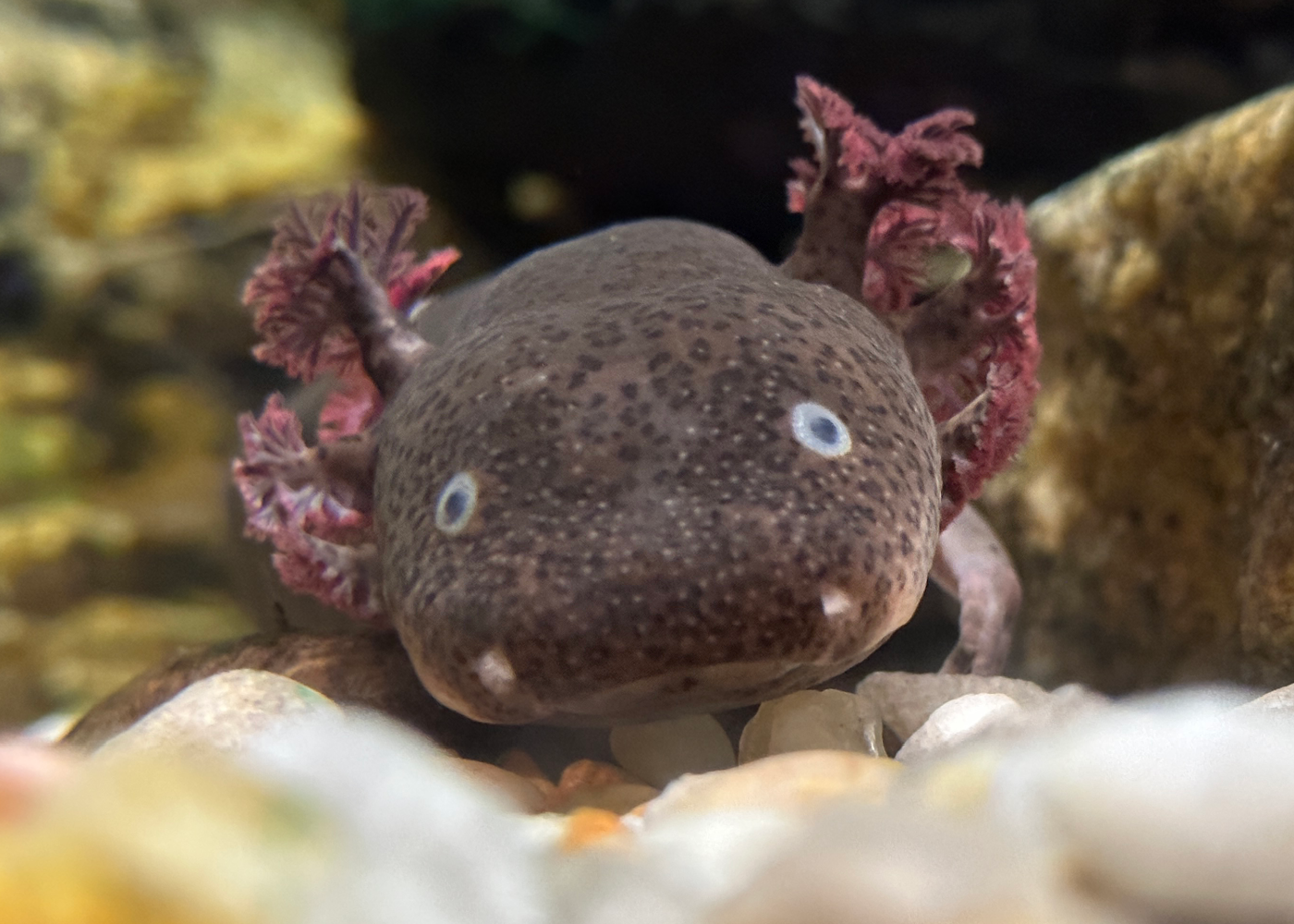It’s time for another case of mistaken identity, folks! Walking through the Aquarium, there are thousands of animals to see, and it can be easy to confuse some of our charismatic creatures with others we’ve seen before. Let’s dive into some specifics about similar species that you may be surprised to learn are actually vastly different!
North American River Otter vs. Sea Otter
A walk through our Mountain Forest will lead you to a pair of rambunctious (or perhaps napping) mammals, Charlie and Beau, who many may first identify as sea otters. Did you know these two brothers are actually North American river otters? While both species of mammals have incredibly dense fur and spend a lot of time looking cute swimming and splashing in the water, let’s explore some key differences of their species:
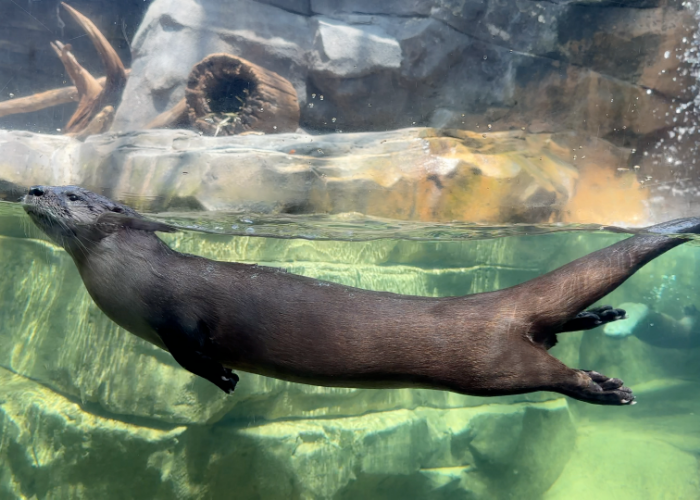 North American River Otter, Lontra canadensis
North American River Otter, Lontra canadensis- Size: up to four feet in length, up to 35 pounds
- Habitat: mountain rivers, streams and lakes
- Identification: four short legs with webbed feet, non-retractable claws and a long muscular tail
 Sea Otter, Enhydra lutris
Sea Otter, Enhydra lutris- Size: up to five feet in length, up to 100 pounds
- Habitat: kelp forests and saltwater estuaries of the North Pacific Ocean
- Identification: two front legs with retractable claws, two back legs with flipper-like webbed feet and a short flat tail
Southern Stingray vs. Atlantic Stingray
Have you met the stingrays in The Shallows and our Touch Tank? You may think you saw two different species… but you actually saw three! Our cownose rays stand out with their playful interaction with guests, but the rays that stay toward the bottom of The Shallows are southern stingrays, while the rays that cohabitate with our chain dogfish on the second floor are Atlantic stingrays. Let’s see what differences they have that help us tell them apart:
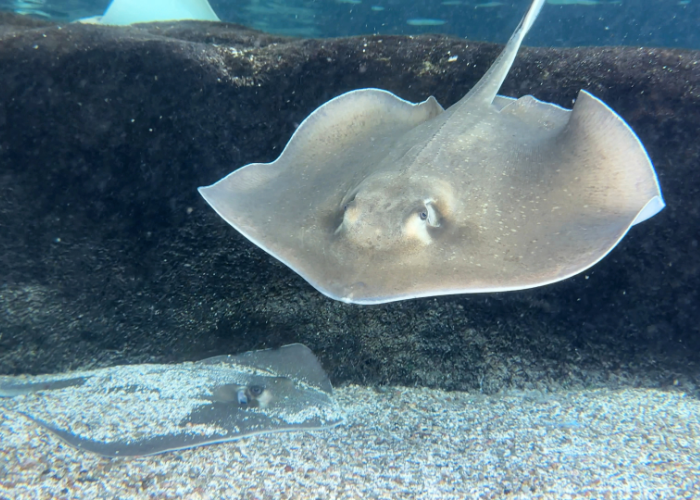 Southern Stingray, Hypanus americanus
Southern Stingray, Hypanus americanus- Size: up to six-foot wingspan, up to 200+ pounds
- Habitat: shallow sandy seafloors of the western Atlantic Ocean, Caribbean Sea and Gulf of Mexico
- Identification: gray, brown or olive in color, a diamond-shaped body and a long tail
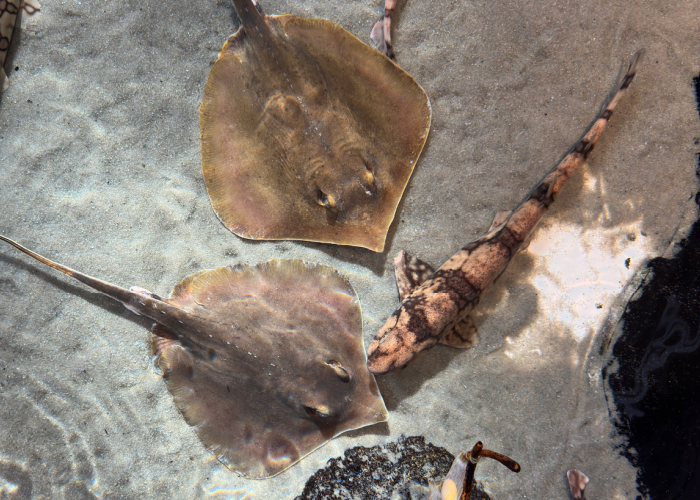 Atlantic Stingray, Dasyatis sabina
Atlantic Stingray, Dasyatis sabina- Size: up to 18-inch wingspan, up to 13 pounds
- Habitat: shallow brackish or freshwater from the Chesapeake Bay to the Gulf of Mexico
- Identification: tan or brown in color, spade-shaped body and an elongated and pointed snout
Lesser Siren vs. Axolotl
Settled into a small exhibit in our Piedmont gallery are two eel-like salamanders. A glance at their faces and fancy-looking external gills might lead you to believe they are axolotls, but they’re actually lesser sirens! With such a similar appearance at first impression, let’s examine how to really tell these two species apart:
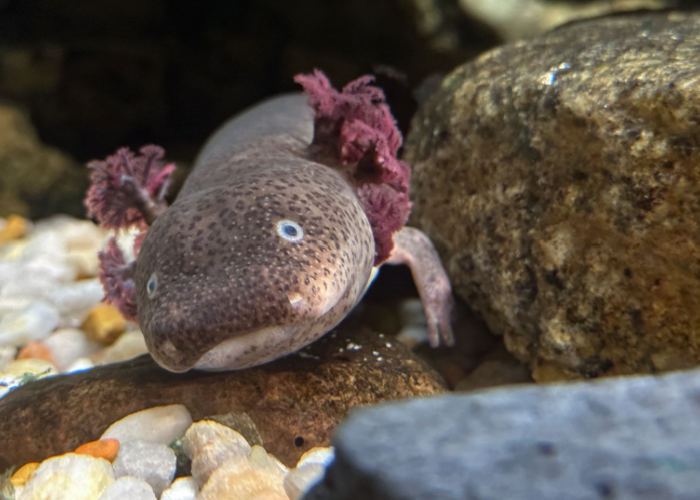 Lesser Siren, Siren intermedia
Lesser Siren, Siren intermedia - Size: up to 24 inches in length
- Habitat: slow shallow freshwater like ponds and floodplains throughout the eastern United States and northern Mexico
- Identification: dark gray, blue or black (and can also be spotted) with external gills and two four-toed legs
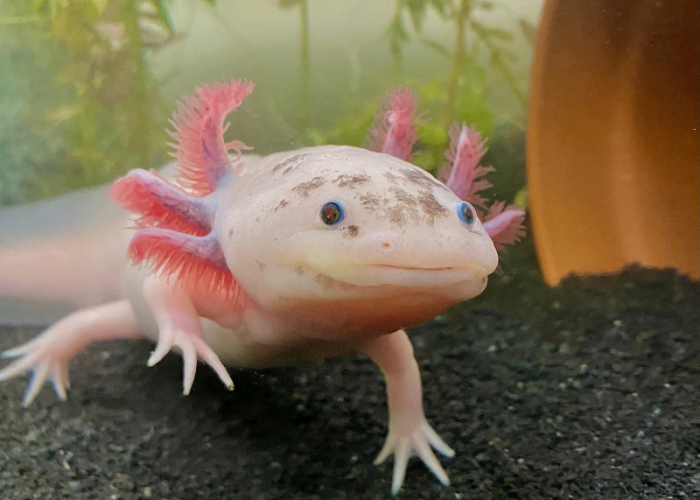 Axolotl, Ambystoma mexicanum
Axolotl, Ambystoma mexicanum- Size: up to 18 inches in length
- Habitat: high altitude freshwaters of Mexico; can also tolerate brackish water
- Identification: brown or tan, but can also be leucistic (appearing white or pink) with external gills, two four-toed front legs and two five-toed back legs
Copperhead vs. Corn Snake
South Carolinians tend to know their snakes, especially the infamous copperhead; these venomous snakes can hide in wooded areas or even under piles of leaves or logs in your yard! Whenever you spot an orange-hued snake, it may be easy to assume it’s a copperhead, but there’s a non-venomous doppelgänger out there… the corn snake! Let’s take a look at the differences between these two slithering species:
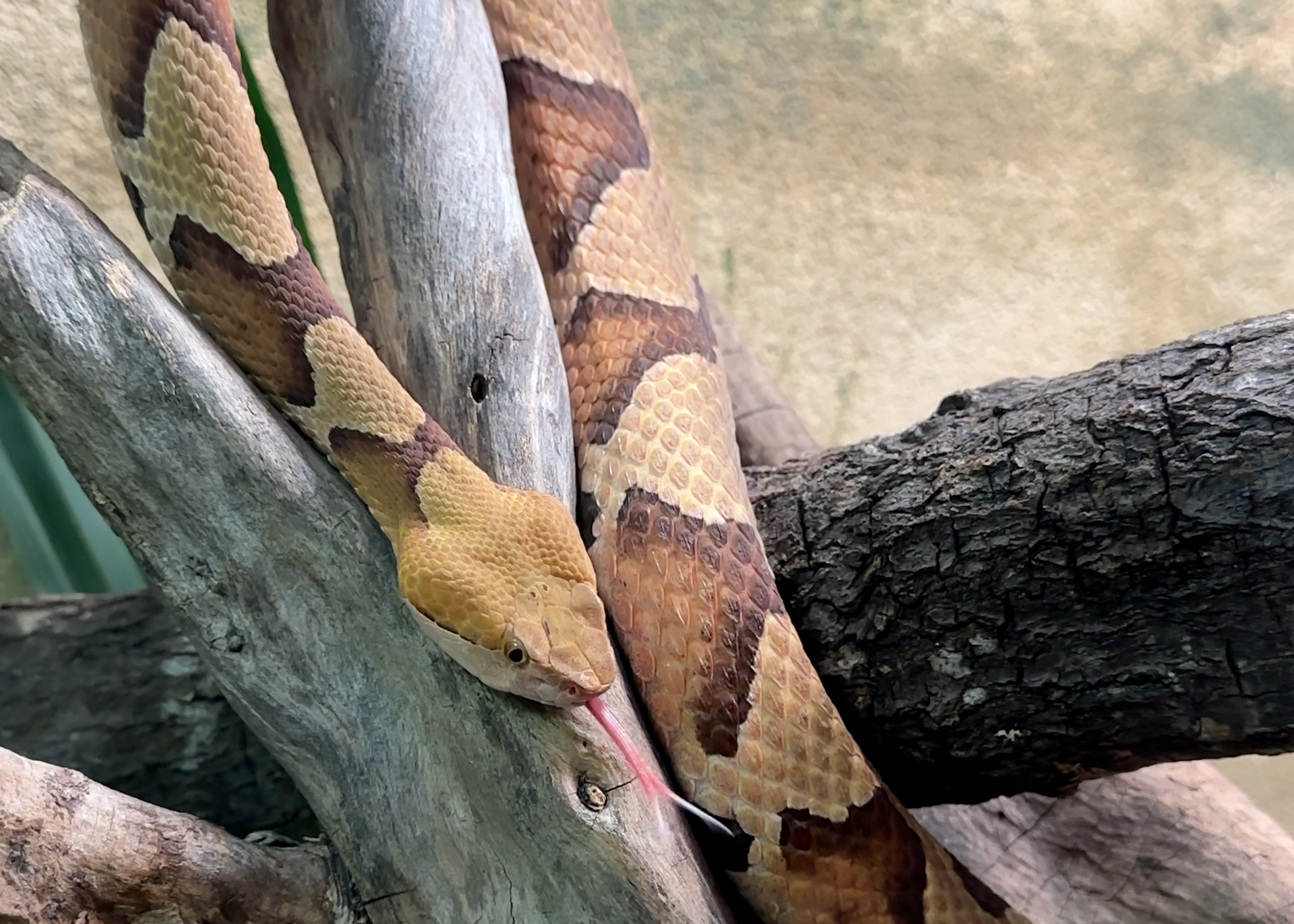 Copperhead, Agkistrodon contortrix
Copperhead, Agkistrodon contortrix - Size: up to 36 inches long
- Habitat: rocky wooded hillsides or woodlands and places with lots of leaves and logs on the ground throughout the Southeast United States
- Identification: copper or tan in color, keeled (raised) scales, a triangular-shaped head, vertical pupils and a dark banded hourglass-shape pattern
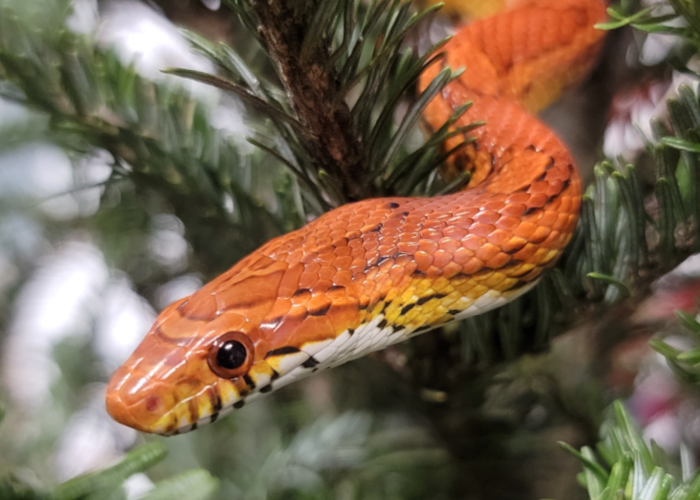 Corn Snake, Pantherophis guttatus
Corn Snake, Pantherophis guttatus- Size: up to 72 inches long
- Habitat: rocky wooded hillsides, overgrown fields and forest openings throughout the Southeast United States
- Identification: orange or brownish-yellow in color, smooth scales, a spear-shape pattern on the head and large orange or red blotches outlined in black along the back
Loggerhead Sea Turtle vs. Green Sea Turtle
If someone showed you a picture of two adult sea turtles of different species, do you think you could name which is the loggerhead and which is the green? Although our resident loggerhead, Caretta, looks quite distinct compared to the juvenile green sea turtles regularly in our care at the Sea Turtle Care Center™, once those greens grow, it can become difficult to distinguish each species. Let’s take a closer look at both and learn what sets them apart from each other:
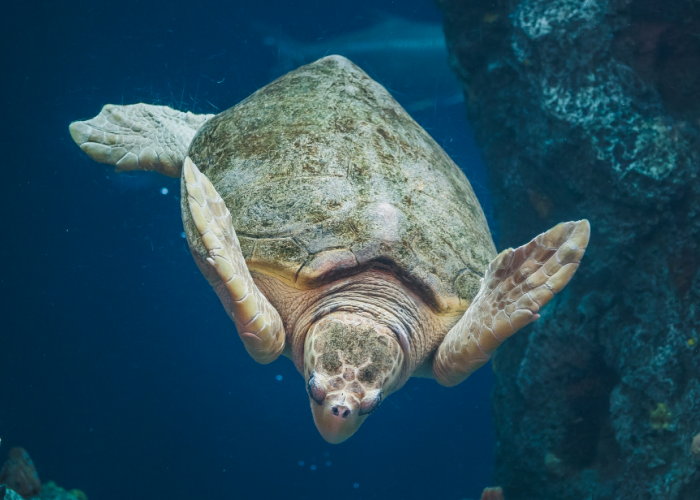 Loggerhead Sea Turtle, Caretta caretta
Loggerhead Sea Turtle, Caretta caretta - Size: up to 3.5-foot carapace (back shell), up to 350 pounds
- Habitat: subtropical and temperate regions of the Atlantic, Pacific and Indian Oceans and Mediterranean Sea as well as shallow coastal bays and estuaries
- Identification: large log-like head and a reddish-brown carapace with five vertebral scutes (scales) and five lateral scutes on each side
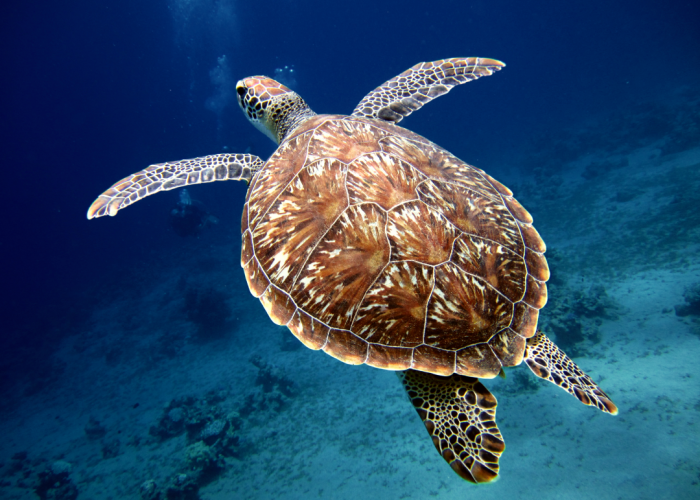 Green Sea Turtle, Chelonia mydas
Green Sea Turtle, Chelonia mydas- Size: up to 4-foot carapace (back shell), up to 450 pounds
- Habitat: subtropical and temperate regions of the Atlantic, Pacific and Indian Oceans and Mediterranean Sea, typically near coastlines and islands
- Identification: small head with serrated jaw and a brown, gray or olive carapace with five vertebral scutes (scales) and four lateral scutes on each side
Mystery solved! We hope you’ve enjoyed reading up on the evidence in this case of mistaken identity; now it’s time to be an expert witness for your friends and family on your next trip to the Aquarium!
Published August 1, 2023


